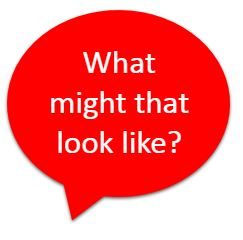| EARLY LEVEL | TECHNOLOGIES | |
| Experiences and Outcomes | Benchmarks | |
| Organiser – Computing Science | • Designs a simple sequence of instructions/algorithm for programmable device to carry out a task for example, directional instructions: forwards/backwards.
• Identifies and corrects errors in a set of instructions. |
|
|---|---|---|
| Designing, building and testing computing solutions | ||
| I can develop a sequence of instructions and run them using programmable devices or equivalentTCH 0-15aLinks to: Numeracy & Maths – Angles, Symmetry & Transformation MTH 0-17a Literacy & English – Listening & Talking – Creating Texts LIT 0-09a, Reading – Understanding, Evaluating & Analysing LIT 0-16a |
||
 |
Progression |
|
| Through a variety of activities & play across my learning I can/am able to | Through a variety of activities & play across my learning I can/am able to | Through a variety of activities & play across my learning I can/am able to |
| With support, begin to experiment & have fun trying to input a simple sequence of instructions into a programmable device e.g. to get it to move left, right, backwards & forwards from a chosen starting point to a chosen end point. | Begin to create simple sequences of instructions for programmable devices in order to complete a task e.g. from a chosen starting point to a chosen end point via one or two identified positions or obstacles. | Begin to program simple sequences of instructions to get a programmable device to move left, right, backwards & forwards from a chosen starting point to a chosen end point via a few identified positions. |
 From Education Scotland National Improvement Hub “What digital learning might look like”: From Education Scotland National Improvement Hub “What digital learning might look like”:
“When applying their skills and knowledge about Computing Science learners might: * guide the Gruffalo’s Mouse (Bee-bot in disguise) find his way back home to the deep dark wood * help the Code-a-pillar pick a safe route to cross the road while avoiding hazards * build a bridge with Lego for the Bee-bot to cross * Learners might work through a process of: Learners can also explore the process parallel to other, real-world activities, such as manoeuvering around an assault course, making a sandwich or building a house with construction blocks.” |
||
|---|---|---|
| Begin to be able to observe & talk about how well different sequences of instructions worked. | Begin to observe & talk about mistakes in sequences of instructions & how to correct these | Observe, talk about & correct errors in sequences of instructions. |
 From Education Scotland National Improvement Hub “What digital learning might look like”: From Education Scotland National Improvement Hub “What digital learning might look like”:
“When learning about instructional language learners might: Learners might develop their understanding from concrete objects to pictorial representations through solving simple puzzles with simple directional symbols in these games” |
||
|
|
||
|
|
||
|
|
||
|
|
||
